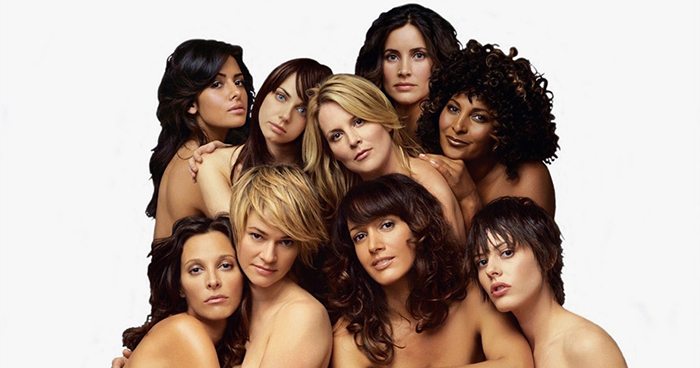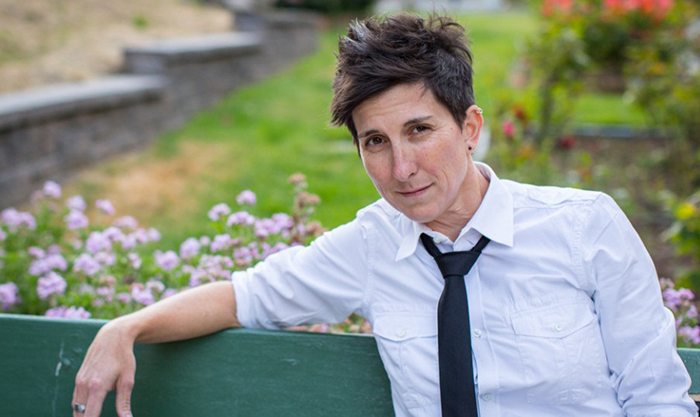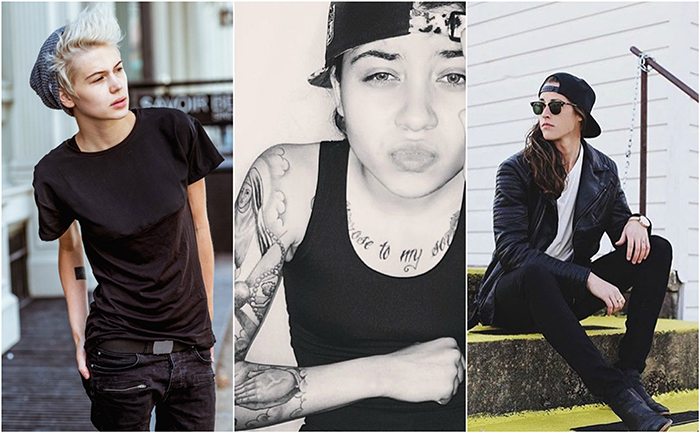If you live in a society where you can be an out lesbian*, the community becomes visible in some way: there is some kind of a code-system to let others know if someone is a lesbian*. For many people, accepting themselves also means that they communicate it to the world on purpose, for example with their unmistakable appearance.
It was not always like this in Hungary, maybe because of the lack of acceptance many lesbians* choose a more traditional appearance. This resulted in an “invisible” lesbian community, who are basically not noticeable in our everyday lives. But how would it be the other way around, if everybody would look the way they want to? Would it be heaven on Earth, or are there disadvantages of that as well?
I am from the US and I use the L word
The cradle of the LGBTQ+ movement is the US, with a big impact in forming a code-system. In a previous article I covered a topic about the visibility of lesbian* and gay people on the streets of Boston: this visibility is thanks to this code-system. It specifies what clothes, pose, style and tone of speaking, etc. radiates lesbian* identity. Actually this can be interpreted as a different language as well, which helps to communicate one’s lesbian* identity and also the type of it.

The code-system itself was formed during the feminist and gay movements of the US and it is pretty successful, because in many cases even heterosexuals can identify gay people easily, even though they wouldn’t need to decode these signal, as they don’t search for a partner form the LGBTQ+ community.
So first of all it’s great that a separate language exists to find other lesbians*. Obviously this system is not only efficient (e.g. to find a partner or community), but also helps to express one's identity and personality. However if you look more into it, like every other system, this one also has some limits. Let’s check the details of the code-system!
Butch and femme - it used to be easy back then
It’s a cliche since God knows when that a lesbian* is a masculine female. And even though the not so ordinary, too masculine females were consequently punished throughout history, lesbians* often had short hair to recognise each other more easily. To the second half of the 20th century, the concept of the masculine lesbian* was formed: butch, and to it’s contrary: femme as the traditionally feminine lesbian*.

The birth of these concepts meant that even though everybody had her own way of presenting themselves, these two lesbian* categories practically separated them into two groups. The main question was no longer that if you are a lesbian* how you present yourself and find other lesbians*, but if you are a butch or a femme and what methods you use to express it. Two different languages were formed for the two groups. Butch is different from the previous androgynous, masculine lesbians* because it excludes every traditionally feminine elements.
For example it’s not acceptable for the butches to wear just short hair, but it has to be specifically a masculine cut. So the butch style doesn’t leave much space to experiment gender-wise, as in their clothing (trousers, baseball cap), hairstyle (very short, often iroquois), tone (simple, direct, manly) and pose (athletic, but most importantly dominant) they are mostly masculine. As society became more and more accepting, the easier it became to express these styles. (This progress is well presented in the comic book Fun Home by Alison Bechdel, which I highly recommend.)

The situation of the femmes is more exciting (but also harder), because unwritten tradition didn’t show them examples to be a lesbian* and feminine at the same time. The answer in the US partially came from the hippy era, in other times from some feminine version of a male costume (just think about the formal workplace dresses, like the tie designed specially for women). Femme lesbians* quickly formed a language from the hippy indian scarves, feathers and hippy sandals. On the other hand policewoman, flight attendants and ticket inspector dresses offered a pattern how to express feminine style and independence from the heterosexual norms at the same time. (If you are interested in the femme style, the famous series called L Word is highly recommended.)
But how is it today?
In our days butch and femme are considered old fashioned, but for a long time these two categories were in everybody’s mind when it came to lesbians* and these cliches still determe today’s picture. Moreover, if we thought that butch and femme were limiting the self-expression of lesbians*, we haven’t met today’s categories, which are even smaller and more strict.
Instead of butch, the masculine category is more diverse with trans, boi or lesbro. These categories not only specify the masculine look, but they also convert some specific male fashion trends to lesbian* ones. For example lesbros copy the american “bros”, so the style of strictly heterosexual men. For them, the basic outfit is a trucker cap (kind of a baseball cap), loose trousers, preferably dark jeans, simple undershirt and a tattoo (preferably on arms or legs).

The butch style didn’t leave much space for the feminine expressions either, but the lesbro style is represented with only a specific part of the masculine look. The situation of the more feminine lesbians* are less fixed, but it’s also true that certain attributes (like piercing or shaved hair on one side) are almost obligatory.
There’s fly in the ointment
If we look around today it is not hard to find lesbians*: things like the cap, hanging trousers or shaved hair give them away. More precisely the conscious combination of these gives them away. This is great on one hand, because it is easy to find lesbians* and we can also choose from these appearances easily, but on the other hand you are forced to choose between these styles. Visibility has the disadvantage of having to follow one of these styles, otherwise you will be invisible as a lesbian*. This is why the situation of the more feminine lesbians* is worse than before.
It’s a question whether it's good to define these categories so strictly for people to choose from. The expression of identity is not about having to choose from given styles of self-expression. At the same time there’s a risk in not choosing sides, because people won’t know that you are a lesbian*.
It’s also questionable whether these fix categories let people experiment gender conception itself, the question of masculine vs. feminine. Long story short: if we take away the general Hungarian blocks and fears we won’t necessarily end up in a cool, genderfluid world, but in a narrow-minded situation where criterias are even more strict. We should think about creating and obtainable genderfluid world, instead of just taking over the American model.
Translated by Zsófi Bártfai

